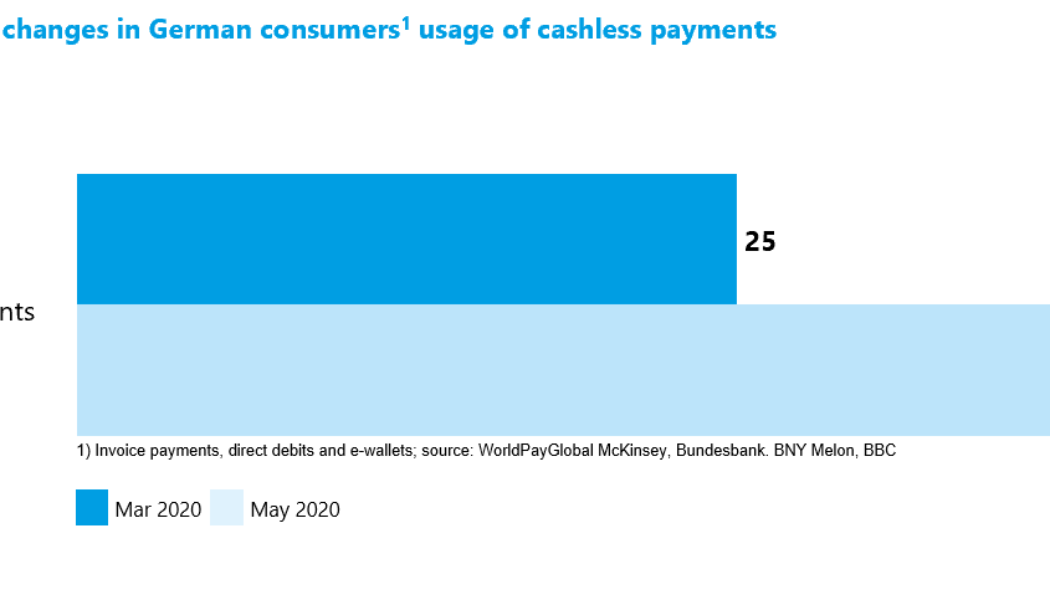/* custom css */
.tdi_4_560.td-a-rec-img{ text-align: left; }.tdi_4_560.td-a-rec-img img{ margin: 0 auto 0 0; }
Driven by the COVID-19 pandemic, contactless payments have become the world’s preferred payment method. In addition to being safer from a viral transmission perspective, contactless payments are also faster, and integrating multiple contactless payment methods assists small businesses to better maintain financial liquidity.
While choice in payment methods boosts Customer Experience (CX), we still have a way to go before South Africa fully embraces cashless payments. This will necessitate educating the population on card security and business owners on the benefits of contactless payments and the reduction of cash on hand.
Formal vs Informal Trading
/* custom css */
.tdi_3_696.td-a-rec-img{ text-align: left; }.tdi_3_696.td-a-rec-img img{ margin: 0 auto 0 0; }
Contactless payment has now become standard in the formal retail space. The next step? Conquering the informal sector. In the informal space, cash is king, especially when it comes to single mothers and older people who are social grant recipients.
Anecdotally speaking, when social grants are paid into the account, at least 80% of recipients withdraw that cash within three or four hours. This is then used to buy goods at the local spaza or smaller retail businesses that only trade in cash. Particularly in rural areas, these informal or smaller traders do not wish to operate digitally as they ‘fly’ under the radar by only accepting cash.
As a result, the informal sector is lagging in contactless payment method adoption as these businesses have not yet seen the benefit of this technology. Accordingly, the discussion needs to shift to examine what our telecoms and financial institutions are doing in order to mitigate and drive contactless payments in that space.
For example, Vodacom with its acquisition of Alipay (part of China’s Alibaba group) will allow individuals to shop online, pay bills and send money to family, in addition to helping small businesses access financial products like lending and insurance. There’s MTN with their Mobile Money platform, and Telkom has repurposed the Yellow Pages into an online market platform, called Yep. In so doing, telco and banking providers are looking for ways to enable traders to operate in a more digital environment.
This is being done through a concerted drive to help with digitisation and contactless payments in the main market informal sector. The push from the technology provider side is there, all that we need now is the pull-in demand from the informal trading sector.
Information and Awareness is Key
This boils down to education. We need to now educate, empower and create an environment where it’s not too costly to digitise cash. Historically, the infrastructure, software and support systems required from a banking perspective was expensive and there was little or no uptake as a result.
Now, thanks to innovation from the banking and fintech sectors, there is a strong educational drive that will help make the change to move society to more of a cashless digital environment.
In order for this to be successful, it will be necessary to show retailers and the communities that support them, the upside of being digitised. Without this buy-in at the consumer level, including those grant recipients with their preference for cash, the responsibility still sits with the retailer or someone in the supply chain to digitise that cash.
Overcoming Barriers to Entry
While there’s likely to always be a need for cash, it is possible to convert a large chunk of the informal market from cash to card. If more businesses in the informal sector offered digitised or contactless payments, grant recipients would be happy to swipe their SASSA grant cards, thereby avoiding the ATM entirely.
For smaller business owners and traders, the infrastructure necessary to accept digital payment includes a hardware element, such as a mobile device with an app, or a point of sales solution. Traditional payment methods required a different type of hardware at that level. This came with a monthly rental fee as well as a transaction charge, which had to be absorbed by the retailer and often made it unaffordable to offer card payments.
Cost-Effective Security Required
While it has become more affordable to implement the facility for non-cash payments, there has been a resultant need for increased security. Financial institutions will need to figure out how to offer the highest level of security, without affecting the cost to the retailer or seller, and it will have to be at zero cost to the consumer.
The feasibility of that remains to be seen, but all the players involved are now starting to understand what is required to make inroads into this market. Solving the security challenges will still take some time and will require collaboration from the government, the legislature, banks and people on the ground.
However, once we’ve got that adoption at a shopper level, it will be easier to roll that out across supply chains to make those processes safer and easier for all.
Edited by Luis Monzon
Follow Luis Monzon on Twitter
Follow IT News Africa on Twitter
/* custom css */
.tdi_5_0c0.td-a-rec-img{ text-align: left; }.tdi_5_0c0.td-a-rec-img img{ margin: 0 auto 0 0; }










